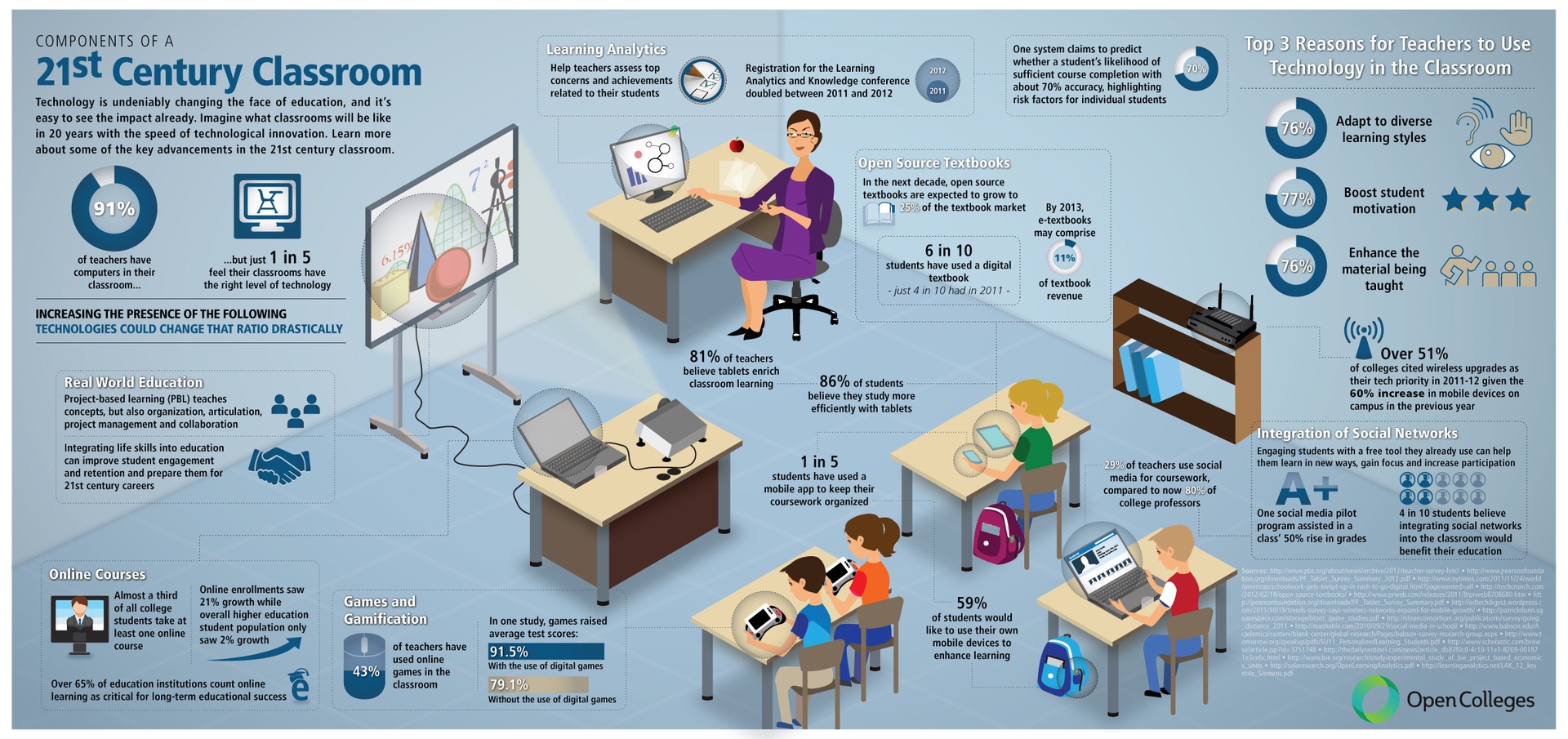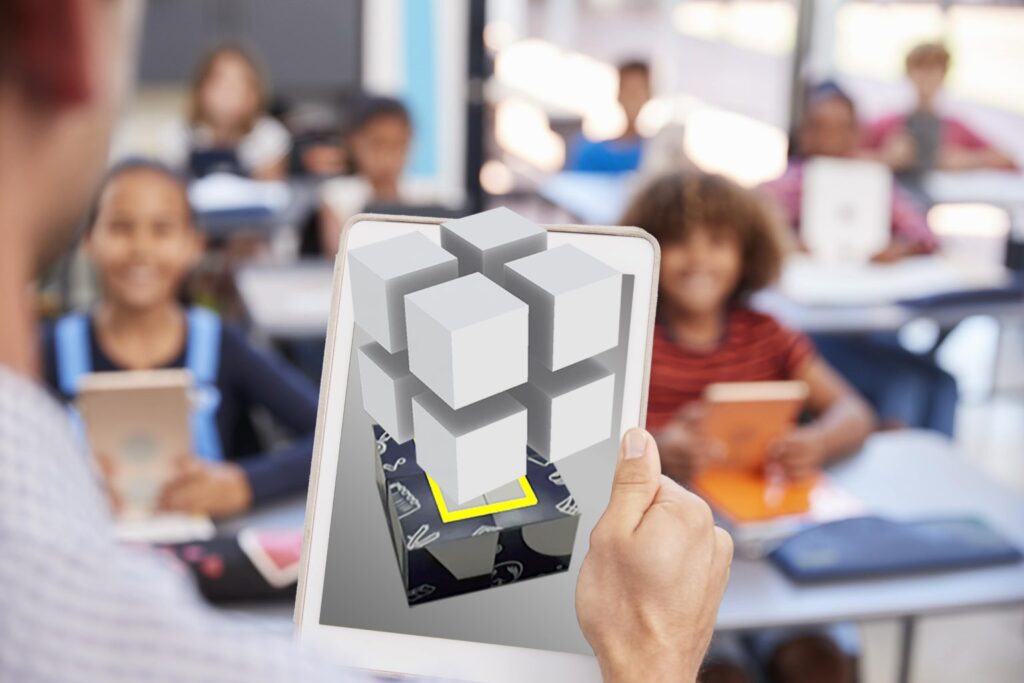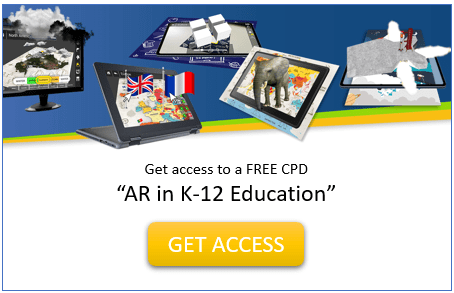Reading time: 12 minutes

Intro
Technology aims to enter classrooms and change the way we educate. Can technology and classroom get alone? Technology and Classroom can get alone. How?
A high school student sits in a classroom with 35 peers listening to the teacher explain the history of post World War I Germany and the dramatic changes that were seen amongst the people, the country’s boundary lines, the relationships with neighboring countries and more using the teaching strategies of lecture, powerpoint, a few graphs, maps, and more lecture. The teacher has an interactive whiteboard with some notes, is using a document camera and relies on information from the textbook to present the topic of the day.
The student attempts to take notes and follow along in the book, but ends up scribbling, day dreaming, texting a message to her friend, takes a nap when the lights go out and then writes down the assigned reading for homework just before the bell rings. This is a description of a high school classroom today, of which there is not a lot of student engagement. Students today are not the same from the Industrial era of America where schools were designed to prepare students for assembly line work.
Students today are 21st Century learners and they want to be engaged, to collaborate with others, to have choices and authentic learning experiences. They need to be prepared to work in collaborative learning environments, take chances, use critical thinking skills, and communicate on a global scale.
Skills
The 21st century Bloom’s Taxonomy lists “Creation” as the highest order of thinking skills. There are Seven 21st century Lifelong Skills we expect students to develop, including creation. Consistent in Bloom’s, the 7 Lifelong Skills students need for the future, the Constructivist Learning Theory, and the International Society for Technology in Education standards, creativity is what experts deem as a highly important skill for all students to develop. Tools that promote creativity allow students to express their learning and understanding in unique and meaningful ways.

I have worked with many K-12 educators who have used a variety of tools that support student creativity, collaboration, communication and critical thinking. Sixth grade students created videos using text and free images to share their monthly book reports, such as a summary of an autobiography or fiction chapter book. In a high school language arts class, students created travel videos outlining locations in the story The Odyssey. Students, in social studies collected data, and created projects using free images and text to summarize the information.
Students in a Family and Consumer Science class created a 30-second public service announcements on health topics. Sixth graders are developing passion projects after researching a topic of choice. Students explore sharing their knowledge through robotics, coding, video design, digital design and artistry.
Technology
When creating a course, unit, or lesson we shouldn’t just add technology, like adding in an audio or video file, linking a website, or posting an assignment on an interactive whiteboard just to add technology. Instead we should ask ourselves “what will students learn from these activities and what are the goals or objectives behind adding these activities to our classrooms?” Understanding students’ learning styles and teaching practices is only a small piece that we need to consider when planning out our classes, taking into consideration what tools will make it an engaging, valuable learning experience is just as important.
The key, I have found, is for the teacher to be open to whatever the student creates, sometimes guiding them with a rubric and limited requirements, and at other times giving students the chance to explore on their own. Allowing students to be creative when assigning a project, be it a brochure, pamphlet, poster, means to provide them with tools beyond paper and pencil.
About Contributor
Written by:
Jenna A. Linskens, EdD
Instructional Technology Specialist
Twitter: @2teach_edtech
Dr. Jenna Linskens is the District Instructional Technology Specialist for the Seymour Community School District and a Certified Education Technology Leader (CETL) through the Consortium of School Networking (CoSN). She provides staff development trainings and coaching support in technology integration, instructional design, and e-learning in K-12 and higher education classrooms. Dr. Linskens earned her Doctorate in Educational Technology & E-Learning through Northcentral University.
She was an elementary educator for 11 years and taught graduate courses in Educational Technology for 7 years at Marian University Fond du Lac, Wisconsin. Dr Linskens also worked with the International Society for Technology in Education for over 3 years providing professional learning and instructional design support to schools around the world. She is a Google Certified Educator, Google Innovator (GTAUK 2014), and Certified BrainPop Educator. She is an Ed Tech Rockstar and has presented internationally, at state and national education conferences around the United States.

